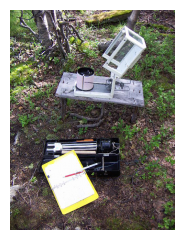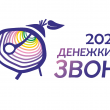Территория заповедника "Денежкин Камень" закрыта для посещения туристами. |
Search |
“Nature Chronicles”"Nature Chronicles" is the established scientific document of Denezhkin Kamen nature reserve. It outlines the main results of nature research and observation. “Nature Chronicles” has a dual mission. First, it accumulates monitoring results of natural processes. Second, it is a stand-alone research program for data collection and data analysis. Downloads: The first monitoring program for Russian zapovedniks was designed in 1934 and focused on long-term studies of weather and seasonal plant dynamics, on flora and fauna and the mapping of biomes. The first volumes of the Chronicles of Nature were compiled in 1945 (Shtilmark, 1996) and the Chronicle continues to be the main scientific documentary product of the zapovednik system, providing a synthesis of systematic observations of natural processes and phenomena. Isakov (1983) characterized the Chronicles of Nature as a compilation that contains studies of the dynamics of natural phenomena besides being in itself an independent program of scientific research. This scientific study contains, in addition to primary data, the conclusions drawn from its analysis: it gives valuable insight into trends in natural processes. A zapovednik's Chronicles of Nature are compiled on the basis of primary data collected not only by researchers from its scientific section but also by technical personnel and wardens (who collect data according to a designed but simpler program) and also by those working temporarily in the zapovednik such as guest scientists, technicians from other research organizations and students. The totality of available information on the state of ecosystems of the zapovednik territory and on their individual components is accumulated in the Chronicles of Nature. Organization of Research: Conducting Observations for Chronicles of Nature.A thorough survey which is conducted before a territory can be given its special “preserve” status provides the zapovednik staff with primary species lists and sometimes with a series of thematic maps. At the minimum forest inventory maps are usually available from during the Federal Forest stock-taking exercise compiled every ten years for every region. These lists and maps provide a basis for the monitoring programs to be undertaken. The main objectives for a zapovednik research team typically are:
The first two objectives are a requisite for all zapovedniks; however, the others depend on the availability of particular specialists on staff or through collaboration with experts from other scientific organizations who often participate in the research programs. Data collection is organized so as to ensure that phenomena and processes are studied at three levels: population, ecosystems and in relation to the broader ecosystem (Filonov and Nukhimovskaya, 1985, 1990). If a zapovednik consists of significantly differing parts, separate sets of data are collected for each part. A hierarchical organized network of monitoring plots is set up and their location is chosen to represent the landscape structure of the territory. The size and number of monitoring plots depends on the heterogeneity and size of the zapovednik, specific research objectives and logistical conditions. Sites must be suitable for conducting observations over an indeterminate period. To assure continuity all sites are marked, inventoried, described and mapped. It is highly undesirable to relocate a research plot or a monitoring site. Research projects to be carried out on zapovednik territory are subject to two stringent conditions: the methods used must have minimal or no impact on the ecosystem, and the chosen methods and research objectives must allow extrapolation of results for a wider region or category of subject. On the whole data is presented in tabular form, with notes and brief commentary appended. The Federal zapovednik's Scientific Director is responsible for editing his annual Chronicles of Nature. Each Chronicle of Nature volume is completed in quadruplicate; two copies are retained by the zapovednik and the others sent respectively to the Moscow administrative center, the Federal Archive. Some zapovedniks publish their Chronicle volumes, which allow other organizations to make use of the information they contain. Chronicles of Nature: the Main Headings.1. Territory
|
LanguagesНовостиВсе новости заповедника |








